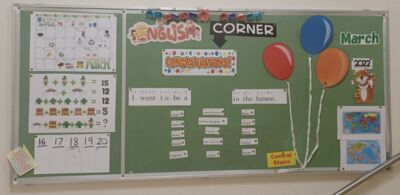Contributing to the Classroom as an ALT in Japan

English education in Japan has been prominent for decades and starts in elementary schools. It is in high demand as the relationship between the U.S. and Japan as well as the abundant amount of tourism. Last year straight after graduating from university in the United States, I moved to Japan and began teaching English. I was fortunate to pass the interviews and become part of the Japan Exchange and Teaching Programme {JET}. Being an assistant language teacher {ALT} in the Japanese education system versus a conversation school has its differences. Therefore I will be diving into how one can contribute to the classroom as an ALT.
Table of Contents
Collaborating with your Homeroom Teacher
Are you ready to teach English as a foreign language?
Check out what our course grads say in our many video testimonials!
Japanese Elementary School
In Japanese elementary schools, all the students have English classes, but the amount differs depending on the grade. At my schools, the 1st and 2nd graders usually have English classes once a month. The 3rd and 4th graders have a class about once a week, while the 5th and 6th graders have class twice a week. But these can always be adjusted depending on holidays, changes in schedule, etc.
In Japanese schools, there are homeroom teachers similar to the United States, but it is different. These teachers will teach mostly every subject to the students with some exceptions. Sometimes there are Japanese teachers of English {JTE} who only take over for English classes, but this is not always the case as it is most common in junior high school... At the schools I teach at, there are no Japanese teachers of English; therefore, I must work with all the individual homeroom teachers.
For English classes, there is a set textbook that the teachers tend to follow solely. Each contains about 8 to 9 units. To start off the class, I am usually expected to ask the students four questions: What's the date today? What day is it today? How's the weather? What time is it now?. The textbook has an online version which the teacher puts on the television. The class uses such to watch videos and sing songs from the textbook.

Collaborating with your Homeroom Teacher
If there is one thing to never forget is that you are an assistant language teacher; therefore, there may be times when you think you are not contributing as much as you would like. It will, of course, differ. This usually depends on the school and the teacher on how the classroom dynamic will work. Cases in which the schools may not have had an assistant language teacher before or in a long time result in them not knowing exactly how to incorporate you into the lesson.
Continuing from above, it is extremely important to always be prepared and eager to contribute at any given time. In the beginning, the teachers may simply just as you to confirm certain structures or cultural differences during class. But even at this time, it is important to be active and fast on your feet. I recommend that you prep thoroughly prior to the class. I usually check the lesson plan, if it is provided, and go through the book to see what exactly the student will be doing. I always make a habit of checking my personal lesson sheet to see what we did last class and working on the one for that day to figure out what to stress on.
In order to integrate yourself into the classroom, there are a couple of things that you can do. Creating visual cards can be quite helpful in practicing key vocabulary. In my personal experience, I would ask the teacher before class if they would like me to bring or make the cards to help the students. Some classes might not use them, but others will. It is a simple task but can go a long way. Just find the correct photos, put the English on the bottom, print and laminate.
Outside of the classroom
If you still want more ideas on how to aid the students with their English skills, the perfect answer is the English board. Most schools have bulletin boards placed throughout the campus; therefore, they will have one for English only. This is your time to do anything you would like. It is your responsibility. You can take this opportunity to have different themes and showcase anything that you think the students would enjoy.
It is not forced upon you to change it multiple times a month, but it would be best to have a different thing per month. You can have information for the students to learn about something news or purely games. Having a balance between the two is the best option. Some students will not stop by if, at a glance, all they can see is a paragraph in English. All students learn differently hence, having many options is the best plan.
Conclusion
Each class and school are not identical. Therefore it will take time to figure out what you can and can not do. But attempting a variety of ways is a great start to discover how you can contribute to the students' English as an assistant language teacher.
Are you ready to teach English as a foreign language?
Apply now & get certified to teach english abroad!
Speak with an ITTT advisor today to put together your personal plan for teaching English abroad!
Send us an email or call us toll-free at 1-800-490-0531 to speak with an ITTT advisor today.
Related Articles:
- Top 10 Cities in Europe with the Highest Demand for English Language Teachers
- 5 Reasons To Take A TEFL Course Right Now - Even If You Are Not Leaving Yet | ITTT | TEFL Blog
- All the Documents You Will Need to Teach English Abroad
- The Impact of Positive Motivation on an ESL Classroom
- You're Never Too Old to Change Your Life and Do a TEFL Course | ITTT | TEFL Blog
- Getting Student Placement Right - The Best Desk Arrangements for EFL Students



